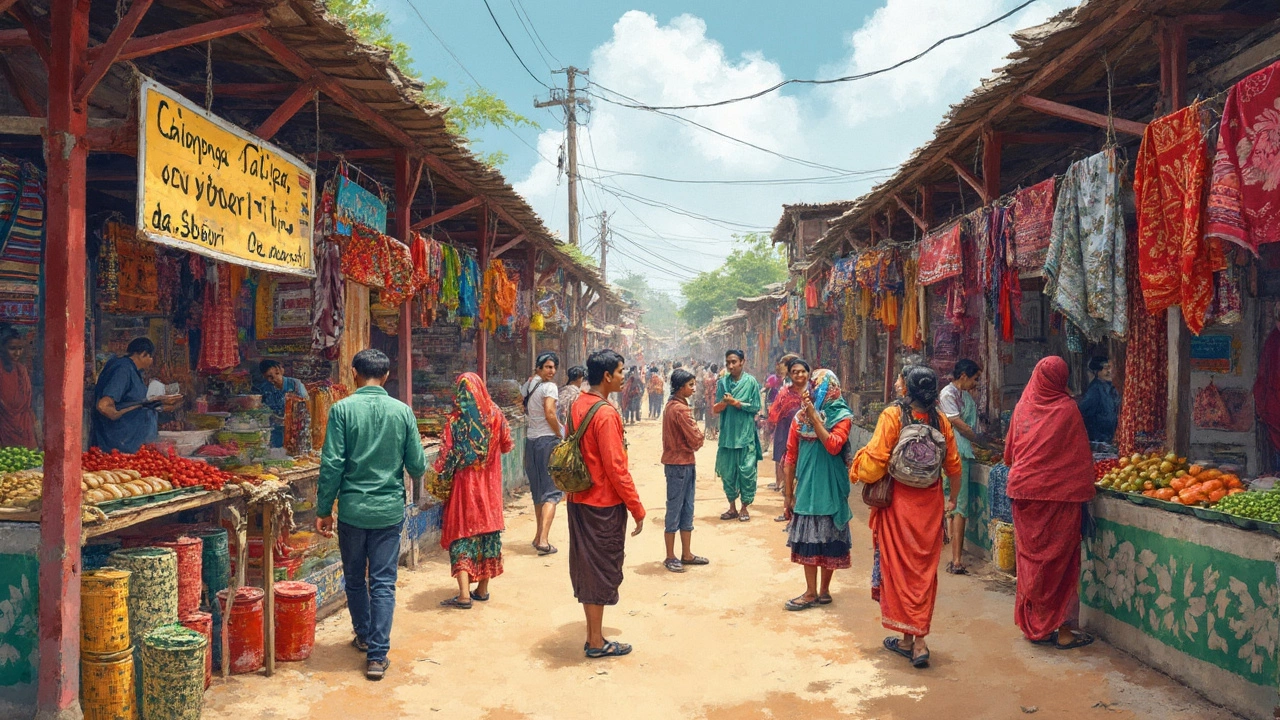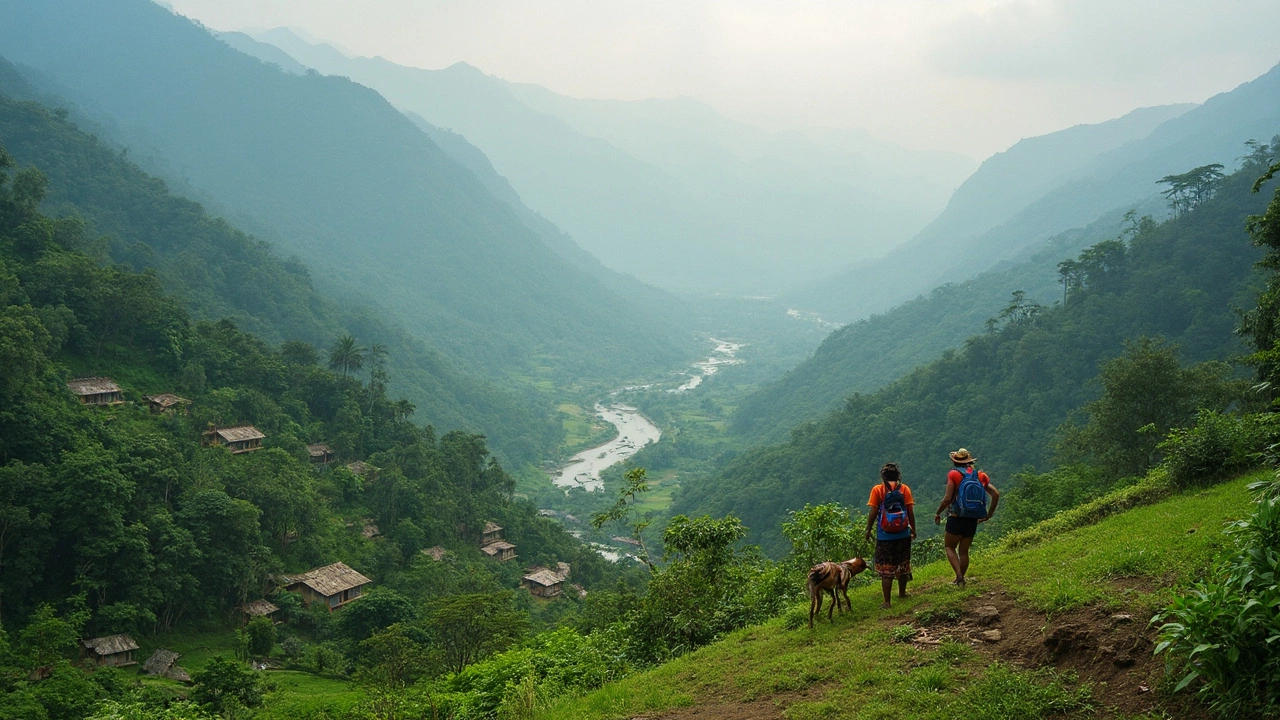Most folks rave about the untouched beauty and vibrant cultures of North East India—but the rapid growth of tourism has stirred up quite a few problems nobody tells you about. Want to get a real feel for the place? It helps to know what's going wrong behind all those Insta-perfect hilltop views.
For starters, the environment is taking a real hit. Traffic jams of tourist SUVs clog up mountain roads, plastic bottles litter trails, and wildlife is getting pushed out of its own home turf. It’s not just nature fans who notice this—anyone hoping for those peaceful off-the-grid feels gets a rude awakening when they spot piles of trash near waterfalls or crowded ‘secret’ villages full of day-trippers.
- Strain on the Environment
- Impact on Local Communities
- Travel Challenges in the Region
- Tips for Responsible Tourism
Strain on the Environment
When you think of North East India, pristine forests, wild rivers, and rare animals probably come to mind. But with tourism exploding in places like Meghalaya and Arunachal Pradesh, the environment is under serious pressure. Shillong’s famous Laitlum Canyons and Dawki’s crystal-clear river are now packed with visitors during the season—locals say foot traffic has tripled just in the last five years. Trees are getting chopped for new hotels, and fragile hills are often blasted for road-widening projects.
Plastic waste is everywhere—if you've hiked the hills near Cherrapunji or visited root bridges, you've no doubt seen water bottles piled up beneath the trees. Local groups try their best to clean up, but the problem is getting worse. Experts from Guwahati University estimate that tourist hotspots in the region generate up to 30% more plastic waste per month than before 2020. Waste management hasn’t caught up, so trash ends up in rivers and forests.
It’s not just about the trash. Noise pollution is on the rise in quiet mountain villages, thanks to loud music and traffic brought in by tourist vehicles. Rare animals—like the Hoolock gibbon and Red Panda—are being pushed further into remote forests. The Kaziranga National Park, known for its one-horned rhinos, faces illegal vehicle entry during tourist season, which stresses the animals and disrupts their routines.
If you’re traveling, keep things simple. Stick to marked trails and avoid single-use plastics. Many eco-resorts now offer filtered water to cut down on bottled water waste—so carry your own bottle. Every small action counts, especially in sensitive places where nature and local life are closely tied together.
Impact on Local Communities
There's a side of North East India most tourists miss—how the boom in visitors messes with everyday life for locals. It’s not just about a little extra traffic. For many people who live in hot travel spots like Meghalaya or Arunachal Pradesh, tourism changes how they make money, raise families, and even celebrate their own traditions.
Take the rise in homestays and quick-fix tour packages. While it brings in cash, it sometimes takes business away from local shops and small farms. Young folks may skip school for quick bucks as tourist guides or taxi drivers. It feels great in the short run, but over time, there’s less focus on traditional skills, agriculture, or crafts that have been around for generations.
Cultural festivals like the Hornbill Festival in Nagaland used to be about family and local pride. Now, with thousands of visitors pouring in every December, things are turning more commercial. Sometimes, performers feel pressured to "put on a show" that isn’t totally true to their traditions, just to keep the crowd happy. It's easy for the real meaning to get lost in all that hype.
Tourist hotspots also push up the prices of basic things. Renting a small house or shopping at a vegetable market in tourist-heavy areas often costs a lot more than it did five years ago. Locals who don’t work in tourism feel priced out, and the benefits don’t always reach everyone.
| Area | Before Tourism (approx. 2012) | After Tourism Surge (2024) |
|---|---|---|
| Homestay Prices (per night, INR) | 400 | 1200 |
| Average Market Vegetable Prices (per kg, INR) | 30 | 80 |
| Dropout Rate (age 16+ for tourism jobs, %) | 8 | 23 |
It isn’t all bad—tourism does bring new opportunities and a way to show off local culture to the world. But without careful planning, the deep roots of these communities start to thin out. If you really want your visit to matter, look for ways to spend money right in the village, support true local projects, and treat traditions with real respect. That way, tourism feels more like sharing than just taking.

Travel Challenges in the Region
So you’re dreaming about road-tripping through North East India? Here’s the thing: actually traveling here comes with a bunch of headaches people don’t usually talk about. First off, transport is way trickier than in the rest of the country. There are no direct trains or flights to some of the most popular spots like Ziro Valley or Mawlynnong. Even main highways like NH-37 in Assam or the roads connecting Imphal to Moreh get blocked by landslides during monsoon, and bus schedules can be all over the place. If you hit the roads during summer or festival time, expect overloaded jeeps and cramped shared taxis.
Internet and phone signals are patchy as well. In places like Tawang, network drops are routine, and many spots in Nagaland don’t have data at all. Forget streaming a movie or even reliably booking your next hotel online. This adds another layer of challenge, especially if you’re used to booking things on the fly or need to stay in touch for work.
Permits are another thing travelers struggle with. Indian tourists need an Inner Line Permit (ILP) to visit a few states like Arunachal Pradesh, Nagaland, and Mizoram, while foreigners need a Protected Area Permit (PAP) for Arunachal. These permits aren’t always available at the airport or train station—you might have to apply online well in advance or hunt for an office in a nearby city, which is a pain if you’re short on time.
On top of that, there’s not a huge spread of accommodation options in some scenic villages. Don’t expect a range of comfy hostels or reliable hotels in spots like Majuli or Dzukou Valley—most places offer basic homestays at best, and they can fill up fast during high season. You might want to book ahead, but even then, double-check if your booking will get honored since some small properties don’t update their listings in real-time.
If you like your road trips smooth and without surprises, you’ll want to check this quick table summarizing travel hassles you could face:
| Challenge | Where it's common | Details |
|---|---|---|
| Poor road conditions/landslides | Arunachal Pradesh, parts of Sikkim, Nagaland hills | Monsoon months (May-September), roads often get blocked for hours or even days. |
| Poor network/Internet | Tawang, Ziro, parts of Nagaland & Meghalaya | Patchy or no signal; many remote villages offline. |
| Permit requirements | Arunachal Pradesh, Nagaland, Mizoram | Must apply in advance; not always available on arrival. |
| Limited transport | Remote valleys, smaller towns | Scarce taxis and buses, especially in evenings and off season. |
| Accommodation shortage | Majuli, Dzukou Valley, small destinations | Homestays fill up; hotels may not exist or be listed online. |
The biggest tip? Plan every leg of your journey before you show up—don’t rely too much on last-minute apps or information you’d use in well-traveled places. It might seem like extra work, but it saves a ton of hassle once you’re in the thick of North East India.
Tips for Responsible Tourism
If you want your trip to North East India to really count for something good, small changes in your habits can have a big impact. Plenty of travelers talk about "sustainable travel," but here in the North East, it’s more than just a buzzword—it’s pretty much essential.
The first and easiest thing you can do is ditch single-use plastics. The region’s waste management system just can’t keep up with the flood of plastic bottles and food wrappers tourists leave behind. Carry a reusable water bottle and maybe a metal straw. Most decent guesthouses will let you refill.
Support the local economy directly. Skip the chain hotels and eat at local homestays or roadside stalls. Money spent here actually goes straight to families, and you get a real taste of local culture. Buying souvenirs? Avoid cheap trinkets imported from outside—ask vendors about locally-made crafts. Places like Nagaland and Assam have artisan groups selling handwoven textiles you won't find anywhere else.
If you’re planning to trek or head out into the hills, stick to marked trails. It sounds simple, but many spots don’t have the resources to fix the damage when people wander off. Groups like the Nanda Devi Foundation have pointed out how off-trail hiking leads to erosion and messes with rare plants and animal paths.
- Don’t blast music or leave behind graffiti—sounds obvious, but you’d be surprised. Local tribes in Meghalaya and Arunachal treat many hills and caves as sacred, so a little respect goes a long way.
- Always ask before snapping photos of people or at ceremonies. Not every moment is an Insta opportunity and some villagers really don’t like strangers popping up with cameras.
- Book local guides for treks or village visits. These jobs help keep young people from leaving for cities, and you’ll get stories and access you’d never find on your own.
Finally, try to visit during less busy months. The monsoon (June to September) is tough for travel, but shoulder seasons like late October can mean fewer crowds and happier locals. When you approach North East India with some care, you not only have a better trip—you help locals, protect the culture, and keep these wild places special for everyone.
